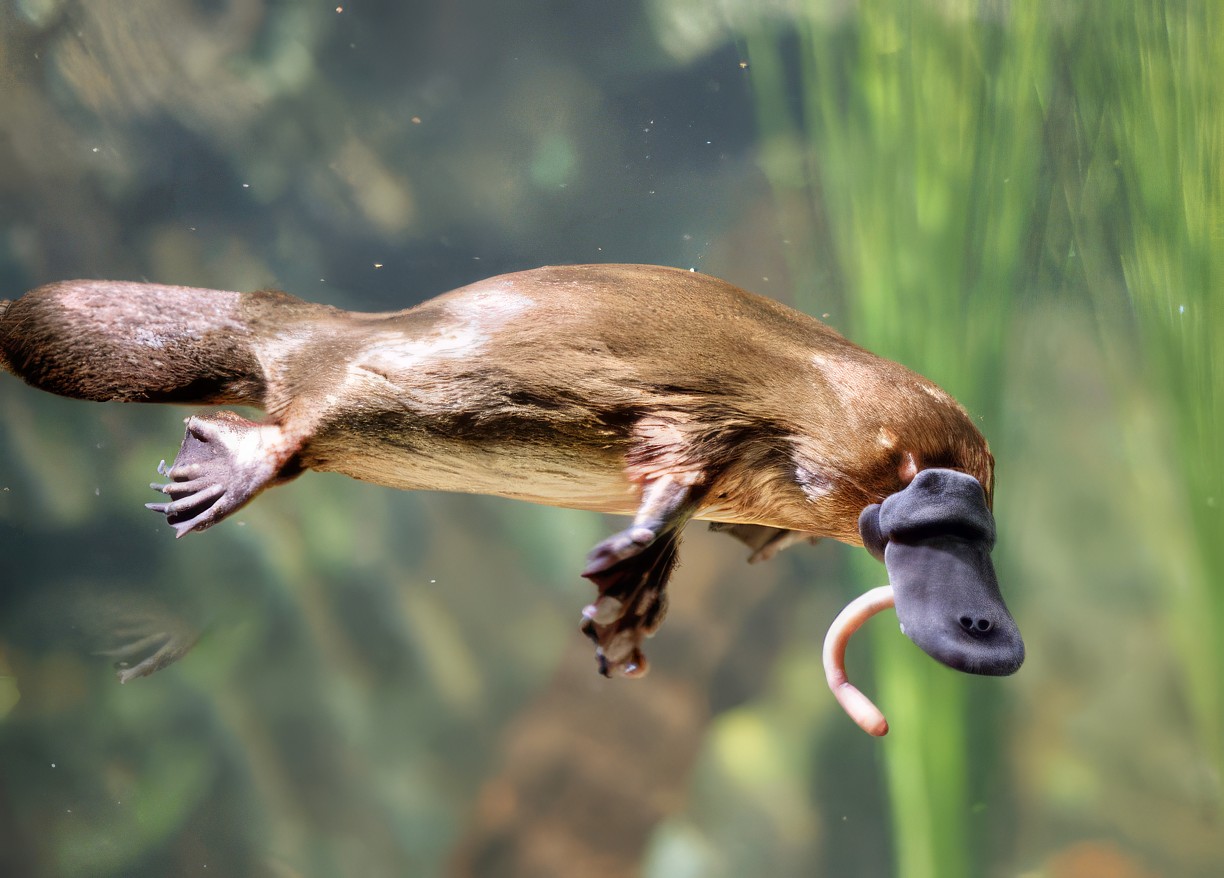A Bizarre Creature Baffles the World 😲
In the late 18th century, when the isolated continent of Australia became a British colony, the English settlers encountered a plethora of unique animals, never seen before. In 1798, New South Wales Governor John Hunter discovered the platypus, a creature so bizarre that it left him utterly perplexed. 🤯
When he inquired about it from the indigenous people, they nonchalantly explained that a young duck had once gone missing, only to be kidnapped by a water rat. After a miraculous escape, it laid two eggs, from which the platypus hatched. The governor was left speechless by this fantastical tale. 🤨
To unravel the mystery, he sent a platypus specimen back to England for examination by eminent scholars. However, even the most learned naturalists were left dumbfounded. This rabbit-sized creature with a beaver-like body and a duck’s bill defied all known classifications. 🐇🦫🦆
A Puzzle for the Ages 🧩
As scientists delved deeper into the platypus’s peculiarities, they found themselves increasingly bewildered. Was it a reptile, a bird, or a mammal? Years of research yielded several intriguing discoveries:
- It was warm-blooded, eliminating reptiles. ☀️
- It had mammary glands and fur, ruling out birds. 🐤
- Yet, it laid eggs and had a cloaca (a single exit for waste and reproduction), akin to reptiles and birds. 🥚💩
Ultimately, the platypus was classified as a mammal, albeit in a separate order called “Monotremata” (meaning “one hole”), acknowledging its reptilian traits. 🐭
The debate raged on, with English naturalists denying the platypus’s egg-laying abilities, while their French counterparts sided with the indigenous accounts. To settle the dispute, Scottish zoologist William Caldwell embarked on an expedition to Australia in 1884, hiring 150 indigenous assistants to hunt for evidence. After months of searching, they finally found platypus eggs, resolving the enigma once and for all. 🔍🥚
An Evolutionary Marvel 🧬
Further studies revealed that the platypus lineage branched off from other mammals around 200 million years ago, during the time of the dinosaurs. While more advanced mammals like marsupials and placentals took over, the platypus and echidna managed to survive, the last remaining monotremes. 🦡
This ancient lineage, once teeming with diverse species, was gradually outcompeted and driven to the brink of extinction by the more sophisticated marsupials and placentals. The platypus’s ability to thrive in aquatic environments, coupled with its unique adaptations, allowed it to endure where its monotreme cousins perished. 🌊⚱️
Peculiar Adaptations 🌊⚡️🦶
To thrive in its aquatic habitat, the platypus evolved remarkable features:
- Webbed feet for swimming, with front feet larger than the body for paddling. Its webbed feet can fold back to reveal claws for burrowing on land. 🏊♂️🐾
- Electroreceptors on its bill to detect electrical signals from prey in murky waters, allowing it to “see” through mud and sand. ⚡️🕳️
- Venom glands in its hind legs for defense, delivering a potent but non-lethal toxin. 🦶🐍
The platypus’s hunting technique is truly remarkable. Blinded and deafened by water-tight seals around its eyes and ears, it relies solely on its electrosensory bill to locate its prey – small crustaceans, worms, and insect larvae – by sensing their bioelectric fields. It then scoops them up with its rubbery bill, grinding them between bony plates and gravel. 🦐🪱🕷️
A Venomous Milk Paradox 🥛🐍
Surprisingly, the platypus lacks stomachs and teeth but produces potent venom. More astonishingly, it “sweats” milk onto its belly for its young to lap up, a process that should invite bacterial infections. However, scientists discovered a unique milk protein (MLP) with powerful antimicrobial properties, potentially revolutionizing our fight against antibiotic-resistant superbugs. 💊🦠
This incredible milk protein not only protects the platypus’s offspring but could also hold the key to combating the looming crisis of drug-resistant pathogens. By studying the evolution of this remarkable molecule, researchers may uncover new strategies for developing novel antimicrobials, safeguarding human health for generations to come. 💪🌍
Nesting and Parenting Prowess 🏡👩🍼
As the mating season approaches, the platypus’s nesting behavior becomes a marvel in itself. The males engage in an intricate courtship ritual, biting the females’ tails to express interest. If accepted, the pair forms a temporary bond, swimming in circles to solidify their connection. 💑
After mating, the females undertake an extraordinary construction project. They expand their existing burrows, excavating tunnels up to 20 meters long and furnishing them with vegetation to create cozy nesting chambers. The eggs, typically one to three, are then laid and incubated by the mother’s body heat for approximately 28 days. 🥚🔥
Once hatched, the young platypups (dubbed “puggles”) are nourished through a unique process. Lacking visible nipples, the mother “sweats” milk onto her belly fur, allowing the puggles to lap it up, essentially consuming “sweat milk.” This remarkable adaptation ensures their survival for the first four months until they venture out on their own. 👶🥛
Conserving a Living Fossil 🌳🛡️
Once threatened by the fur trade, the platypus now faces habitat loss and environmental changes. Protecting this evolutionary marvel could unlock invaluable insights into our own biology and pave the way for groundbreaking medical advances. 🌍💉
Conservationists and researchers are working tirelessly to safeguard the platypus’s future, monitoring populations, restoring wetland habitats, and advocating for stricter environmental regulations. By preserving this unique species, we not only honor our planet’s biodiversity but also open doors to potential cures and life-saving treatments. 🌳🔬
Copyright © 2024 Hea1th.net

